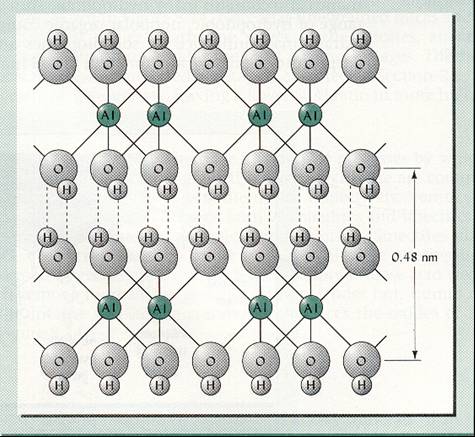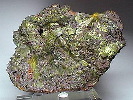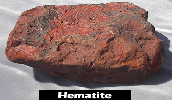|
|
Sesquioxides
-
Sesquioxides are weathering products of Fe/Al-rich primary
silicates. They form through oxidation (chemical weathering). The secondary
clay minerals weather farther and loose all of its Si and most of the other
ions with exception of Al and Fe.
-
Sesquioxides are non-silicate clay minerals or colloids. They
consist of modified octahedral sheets with either
Fe3+ or Al3+ in the
cation position (central cation). They have neither tetrahedral sheets nor
silicon in their structures.
-
They posses little or no isomorphous substitution, i.e. little
negative surplus charge and hence little cation exchange capacity
(
 CEC)
. CEC)
.
-
At the surface they posses covalently bound OH-ions which may
cause strong adsorption of certain anions like phosphate.
-
Gibbsite [Al(OH)3]: most common Al-Oxide
in highly weathered tropical soils such as Ferralsols (see fig.1).
-
Further reading see: "
 http://www.gly.uga.edu/schroeder/geol6550/CM06.html" http://www.gly.uga.edu/schroeder/geol6550/CM06.html"
 |
| Fig.1 Gibbsite |
| (
Source: Brady and Weil 2002, p. 331.) |
Examples
-
Ferrihydrite
(Fe2O3 .
nH2O): in temperate regions, yellow-brownish
color.
-
Goethite (FeOOH): brownish soil color, very abundant.
 |
| Fig.2 Goethite |
| (
Source: http://webmineral.com/data/Goethite.shtml) |
-
red hematite
(Fe2O3): posses
Fe2+ instead of Al3+ in
the O-sheet. Formation: through dehydration of ferrihydrite; gives redder
colors to well-drained soils, especially in hot, dry climates.
 |
| Fig.3 Hematite |
| (
Source: http://www2.volstate.edu/svinson/geo100/minerals.html) |
|
|

 previous | next
previous | next

 previous | next
previous | next